Home>Garden Essentials>Garden Storage>Rock Garden Ideas: 20 Ways To Create A Modern Rockery
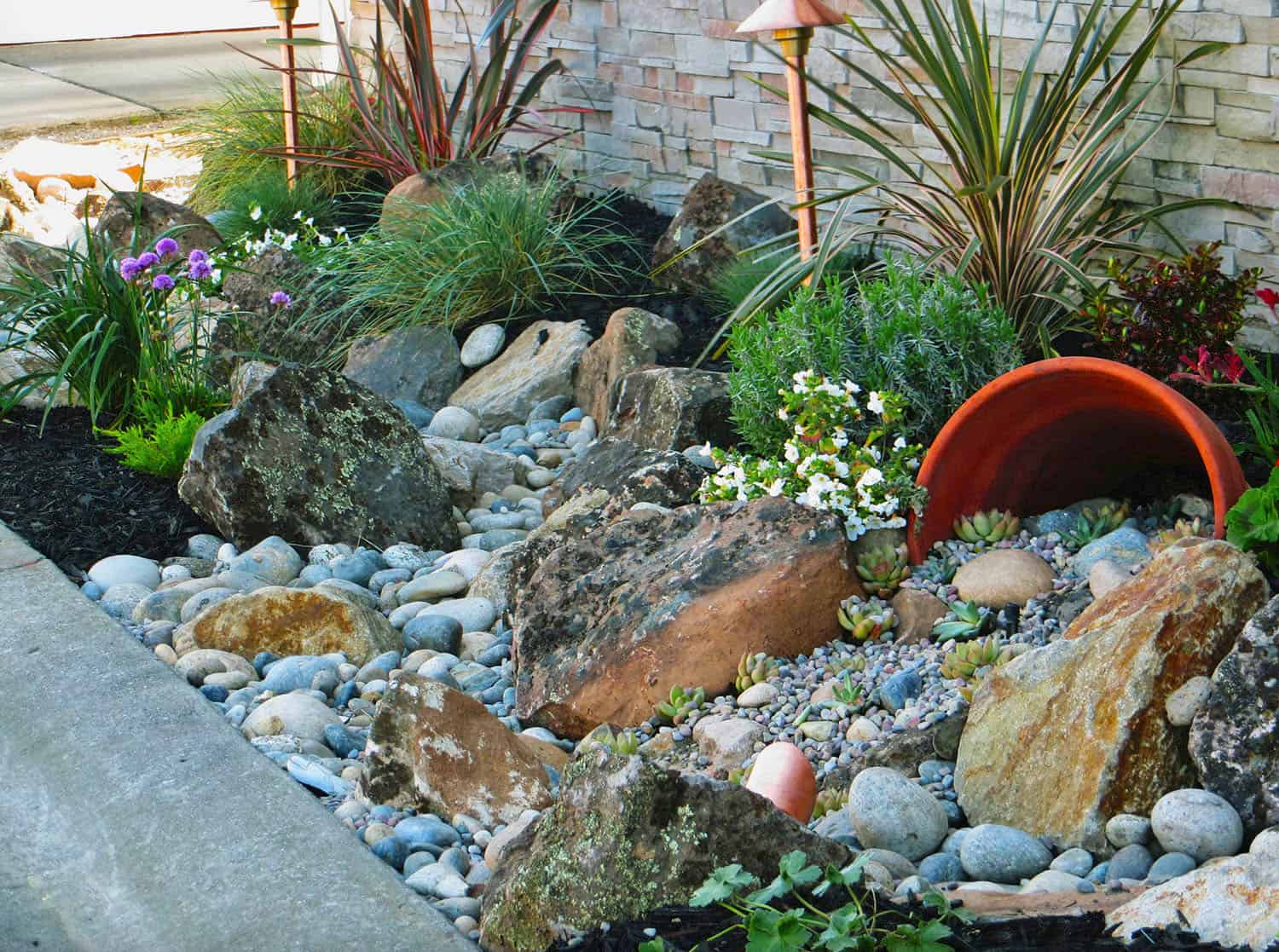

Garden Storage
Rock Garden Ideas: 20 Ways To Create A Modern Rockery
Modified: May 6, 2024
Discover 20 innovative storage solutions and ideas to transform your rock garden into a modern and organized paradise.
(Many of the links in this article redirect to a specific reviewed product. Your purchase of these products through affiliate links helps to generate commission for Storables.com, at no extra cost. Learn more)
Introduction:
A rock garden is a beautiful and versatile addition to any outdoor space. Whether you have a large backyard or a small balcony, incorporating rocks into your garden design can create a modern and visually appealing landscaping feature. Rock gardens are not only aesthetically pleasing, but they also require minimal maintenance, making them an ideal choice for busy homeowners.
In this article, we will explore 20 innovative rock garden ideas that can help transform your outdoor space. From choosing the right location to selecting the type of rocks, designing the layout, and adding plants and other features, we will cover all the essential aspects of creating a stunning rock garden.
So, whether you are a seasoned gardener or a beginner, get ready to be inspired and learn how to create a modern and captivating rockery that will become the focal point of your outdoor area.
Key Takeaways:
- Embrace the beauty of nature and create a captivating rock garden by carefully selecting rocks, incorporating wildlife-friendly elements, and maintaining a balance between visual appeal and practicality.
- Transform your outdoor space into a serene oasis with a low-maintenance rock garden, featuring water elements, seating areas, and decorative sculptures, while providing a habitat for local wildlife.
Choosing the right location:
The first and most crucial step in creating a rock garden is selecting the right location. Take some time to observe your outdoor space and consider factors such as sunlight, soil conditions, and drainage.
Most rock garden plants thrive in full sunlight, so choose an area that receives at least 6-8 hours of direct sunlight each day. This will ensure optimal growth and blooming of the plants. Additionally, make sure the location is not shaded by tall trees or buildings that can obstruct sunlight.
Next, assess the soil conditions. Rock garden plants typically prefer well-draining soil that is not too compacted. If your soil is heavy clay or poorly draining, you may need to amend it with compost or sand to improve its texture and drainage.
Lastly, consider the drainage of the chosen location. Rock gardens are known to be excellent in areas with poor drainage or in locations where water tends to accumulate. If you have a low-lying area or an area prone to flooding, a rock garden can help divert excess water and prevent waterlogging issues.
Remember, the location you choose will determine the success and longevity of your rock garden. So, take your time to evaluate different areas in your outdoor space and select the one that meets the needs of your rock garden plants and your preferences.
Selecting the type of rocks:
Choosing the right rocks for your rock garden is crucial for achieving the desired aesthetic and creating a natural-looking landscape. There are a variety of rock types to choose from, each with its own unique characteristics and appeal.
One popular option is to use indigenous rocks that are native to your region. Using local rocks not only helps create a harmonious and cohesive look but also ensures that your rock garden blends seamlessly with its surroundings. Local rocks are often readily available and can often be sourced for free by searching construction sites or contacting local landscaping suppliers.
If you prefer a more exotic or colorful look, you can consider using decorative rocks such as quartzite, sandstone, or shale. These rocks come in a wide range of colors, including reds, yellows, and blues, and can add a vibrant touch to your rock garden.
Another aspect to consider when selecting rocks is their size and shape. Larger rocks can act as focal points and anchor the overall design, while smaller rocks can be used to create texture and variation. It is also important to choose rocks that have interesting shapes and textures, as this will add visual interest and make your rock garden more dynamic.
Before placing the rocks in your garden, make sure to clean them thoroughly to remove any dirt or debris. This will not only enhance their appearance but also prevent any potential introduction of unwanted organisms or pathogens to your garden.
By carefully selecting the type of rocks for your rock garden, you can create a unique and visually striking landscape that reflects your personal style and enhances the overall beauty of your outdoor space.
Preparing the ground:
Once you’ve chosen the location and rocks for your rock garden, the next step is to prepare the ground to ensure optimal conditions for plant growth and rock placement.
Start by clearing the area of any existing vegetation, such as grass, weeds, or unwanted plants. This can be done by manually pulling them out or using a garden tool like a shovel or hoe. It’s important to remove all roots and debris to prevent any regrowth.
Next, assess the soil quality and make any necessary amendments. Add organic matter like compost or well-rotted manure to improve soil fertility and structure. This will provide essential nutrients to your plants and promote healthy growth.
Incorporate the amendments into the soil by digging or tilling the area. This will help loosen the soil and create a better environment for root establishment and water drainage.
Level the ground if necessary, ensuring that the surface is even and flat. This will make it easier to arrange the rocks and create a visually appealing garden design.
If you’re creating a large rock garden or incorporating slopes, it may be necessary to add retaining walls or create terraces to prevent erosion and provide stability.
Before placing the rocks, consider installing a weed barrier or landscape fabric to prevent weed growth. This will save you time and effort in the long run, as rock gardens are generally low-maintenance compared to traditional gardens.
By adequately preparing the ground, you’ll provide a solid foundation for your rock garden, ensuring that your plants thrive and your rocks are securely placed for a long-lasting and visually pleasing landscape.
Designing the layout:
The layout of your rock garden plays a crucial role in creating an aesthetically pleasing and harmonious outdoor space. Consider the following factors when designing the layout:
1. Balance and symmetry: Aim for a balanced arrangement of rocks and plants to create a visually appealing and harmonious design. This can be achieved by placing larger rocks strategically throughout the garden and balancing them with smaller rocks and plants.
2. Create focal points: Identify areas where you want to draw attention and create focal points within your rock garden. This can be done by placing a larger, more unique rock or by incorporating a water feature or sculpture. Focal points add visual interest and create a sense of intrigue.
3. Flow and movement: Consider how the eye will naturally move through the garden. Create pathways or arrange rocks and plants in a way that guides the gaze and creates a sense of flow. Curved pathways and circular arrangements can add a sense of movement and soften the overall design.
4. Scale and proportion: Pay attention to the size of your rock garden in relation to the surrounding space. A small garden can easily look overwhelmed with large rocks, while a large garden may require bigger rocks to maintain proportion. Ensure that the size and scale of the rocks and plants are cohesive with the overall design.
5. Contrast and texture: Incorporate a mix of different rock types, sizes, and colors to add contrast and texture to your garden. This will create visual interest and make your rock garden more dynamic. Pair rough-textured rocks with smoother ones and mix different colors to create a visually appealing composition.
6. Integration with surroundings: Consider the existing landscape and architectural elements surrounding your garden. Incorporate elements that complement and enhance the overall look. This can include using rocks that mimic natural stone found in nearby structures or considering the color palette of nearby buildings or fences.
Sketch out your design ideas or use landscaping software to experiment with different layouts. This will help you visualize the final result and make any necessary adjustments before beginning the installation.
By carefully designing the layout of your rock garden, you’ll create a visually appealing and well-balanced outdoor space that showcases the natural beauty of rocks and plants.
Creating natural slopes and levels:
One of the key elements of a visually appealing rock garden is the incorporation of natural slopes and levels. This not only adds dimension and visual interest to your garden but also helps to mimic the natural landscape.
Start by analyzing the existing topography of your outdoor space. Observe any natural slopes or flat areas that can be utilized in your rock garden design. You can enhance these natural features or create artificial slopes and levels to add depth and uniqueness to your garden.
When creating slopes, consider the overall aesthetic and functionality of your garden. Gentle slopes are ideal for a relaxed and natural-looking rock garden, while steeper slopes can create a more dramatic and striking effect. It’s important to ensure that the slopes are stable and reinforced to prevent erosion.
Use rocks and boulders to define and reinforce the slopes. Arrange them strategically to create retaining walls and terraces that not only help to stabilize the soil but also add visual interest and texture. Ensure that the rocks are securely placed and interlocked to withstand any pressure or movement.
In addition to slopes, incorporating different levels in your rock garden can create a visually appealing and dynamic design. Use rocks of varying sizes and heights to create stepping stones or raised platforms. This not only adds interest but also provides opportunities for showcasing different plants or creating seating areas.
When arranging the rocks to create slopes and levels, consider the principles of balance and proportion. Place larger rocks towards the bottom or base of the slope and gradually decrease the size towards the top. This will create a visually pleasing and natural-looking progression.
Don’t forget to consider the practical aspects of your creation as well. Ensure that your rock garden is easily accessible and that the slopes and levels are convenient to walk on and navigate.
By creating natural slopes and levels in your rock garden, you’ll add depth and dimension to your outdoor space, replicating the beauty and dynamics of nature.
Adding plants and flowers:
Plants and flowers are an essential component of a vibrant and thriving rock garden. They not only bring color and beauty but also soften the overall look of the rocks and create a natural and harmonious environment. When selecting plants for your rock garden, consider the following:
1. Native and low-maintenance plants: Opt for plants that are native to your region and well-suited to the local climate. Native plants are more likely to thrive in their natural environment and require less maintenance. They are also better adapted to the soil conditions and climate, making them more resilient.
2. Drought-tolerant plants: Rock gardens can be a challenging environment for plants due to the well-draining nature of the soil and the potential for high sun exposure. Choose plants that are drought-tolerant and can thrive in dry conditions. Succulents, ornamental grasses, and Mediterranean plants are popular choices for rock gardens.
3. Contrast and texture: Incorporate a mix of plants with different textures, forms, and colors to create visual interest and contrast. Pair fine, delicate plants with more dramatic and robust ones to create a balanced and dynamic composition. Consider the height and spread of the plants to ensure they fit well within the rock garden layout.
4. Layering and cascading plants: Use trailing or cascading plants to soften the edges of rocks and create a natural and organic look. These plants can spill over rock walls or hang gracefully from higher levels, adding a whimsical and picturesque touch.
5. Consider bloom times: Choose plants that bloom at different times of the year to ensure your rock garden provides color and interest throughout the seasons. Select a mix of early spring, summer, and fall bloomers to enjoy a variety of blooms at different times.
6. Grouping plants: Arrange plants in clusters or groups rather than scattering them individually throughout the rock garden. This creates a more intentional and cohesive look and allows for better visual impact. Group plants with similar water and sunlight requirements to simplify maintenance and care.
When planting, make sure to prepare the soil adequately by creating small holes or pockets for each plant. Backfill the holes with well-draining soil and gently firm the soil around the plant roots.
Regularly check on your plants and provide them with the care they need, including watering, pruning, and fertilizing as necessary. Over time, your rock garden will flourish with a delightful array of colors and textures, transforming your outdoor space into a serene and enchanting oasis.
Incorporating water features:
Adding a water feature to your rock garden can elevate its beauty and create a tranquil and soothing atmosphere. The sound of flowing water and the sight of shimmering reflections can transform your outdoor space into a serene retreat. Consider the following options when incorporating water features:
1. Waterfalls: A waterfall can be a stunning focal point in your rock garden. It can be designed with natural-looking rocks and cascading water, creating a visually striking and calming effect. The height and flow rate of the waterfall can be adjusted to fit the size and scale of your rock garden.
2. Ponds: A small pond or mini pond can provide a tranquil oasis within your rock garden. It can be adorned with water plants, such as water lilies or lotus, to enhance its natural beauty. The pond can also be home to small fish or other aquatic creatures, further adding to the ecosystem of your garden.
3. Streams or creeks: Incorporating a meandering stream or creek adds a sense of movement and serenity to your rock garden. It can be designed with rocks of different sizes and shapes to create a natural-looking flow. Consider enhancing the water feature by adding plants that thrive near water, such as rushes or ferns.
4. Birdbaths or fountains: Birdbaths or small fountains can attract birds and add a touch of elegance to your rock garden. The sound of water trickling or the sight of birds bathing can bring life and animation to the surroundings.
5. Water walls: For a modern and contemporary look, consider incorporating a water wall. Water walls feature a vertical sheet of water flowing down a smooth surface, creating a sleek and sophisticated aesthetic. It can be an eye-catching element and provide a unique focal point in your rock garden.
When incorporating water features, it’s important to consider the size and scale of your rock garden. Ensure that the water feature fits harmoniously with the overall design and doesn’t overwhelm the space. It’s also important to consider the maintenance requirements of the water feature, such as cleaning, filtration, and water circulation.
Whether it’s a small tabletop fountain or a grand waterfall, adding a water feature to your rock garden can create a serene and captivating ambiance that enhances the natural beauty of the rocks and plants.
Including seating areas:
Creating a comfortable seating area within your rock garden allows you to fully enjoy and appreciate the beauty of your outdoor space. It provides a place to relax, unwind, and immerse yourself in the serenity of nature. Consider the following when including seating areas in your rock garden:
1. Choose the right location: Select a spot within your rock garden that offers a pleasant view and is shielded from direct sunlight or strong winds. The seating area can be nestled between rocks, under the shade of a tree, or overlooking a water feature.
2. Opt for durable and weather-resistant materials: When selecting furniture for your seating area, choose materials that can withstand outdoor elements. Consider options such as metal, teak, or weather-resistant synthetic materials that are sturdy, durable, and low-maintenance.
3. Consider the size and scale: Ensure that the size and scale of the seating area are proportionate to the overall size of your rock garden. Avoid overcrowding the space, as you want to maintain an open and airy feel. Select furniture pieces that fit comfortably without dominating the area.
4. Enhance comfort with cushions: Add cushions or outdoor pillows to your seating area to enhance comfort and create a cozy atmosphere. Choose cushions made from weather-resistant materials that can withstand rain and sun exposure.
5. Create shade: If your seating area is in direct sunlight, consider adding a shade structure such as an umbrella, pergola, or canopy. This will provide relief from the sun’s rays and create a more comfortable environment.
6. Blend with the surroundings: Incorporate natural elements into your seating area to create a seamless and harmonious integration with the rock garden. Use planters, hanging baskets, or trellises to add greenery and soften the space.
7. Lighting: Install outdoor lighting to extend the usability of your seating area into the evening. Consider ambient, soft lighting that enhances the ambiance of the garden without overpowering it. Use string lights, solar-powered lanterns, or low-voltage pathway lights for a warm and inviting glow.
A well-designed seating area in your rock garden invites you to spend more time outdoors, whether it’s for reading, sipping coffee, or simply soaking up the beauty of your surroundings. It adds functionality and comfort to your outdoor space, making it a perfect oasis for relaxation and enjoyment.
Installing lighting:
Proper lighting in your rock garden not only enhances its beauty during the evening but also adds an element of safety and security. It highlights focal points, illuminates pathways, and creates a captivating ambiance. Consider the following when installing lighting in your rock garden:
1. Identify key areas: Determine the focal points of your rock garden that you want to highlight with lighting. This can include unique rock formations, water features, or special plants. Identify the pathways and seating areas that require adequate lighting for navigation and safety.
2. Choose the right lighting fixtures: Select lighting fixtures that are specifically designed for outdoor use and can withstand various weather conditions. Options may include spotlights, floodlights, pathlights, uplights, or string lights. Consider energy-efficient and low-maintenance options such as LED lights.
3. Positioning and direction: Place lighting fixtures strategically to direct the light towards key features in your rock garden. Experiment with different angles and positions to achieve the desired effect. Avoid placing lights directly in front of seating areas, as it may cause discomfort to the eyes.
4. Layer the lighting: Create depth and dimension by using a combination of different lighting techniques. Use uplights to illuminate tall plants or trees, downlights to highlight rock formations or ground cover, and accent lights to draw attention to specific areas. This layering of light creates a visually appealing and dynamic environment.
5. Consider the color temperature: Choose lighting with a warm color temperature (around 2700-3000 Kelvin) to create a cozy and inviting atmosphere. This temperature range mimics the warm glow of incandescent bulbs and adds a soft and welcoming touch to your rock garden.
6. Control and automation: Consider incorporating timers, motion sensors, or smart home technology to automate your lighting system. This allows for convenient scheduling and energy-saving operations. You can also adjust the intensity of the lighting to suit different occasions and moods.
7. Conceal wiring: Hide electrical wiring by burying it underground or using conduit. This not only ensures safety but also maintains the natural and uncluttered appearance of your rock garden.
Properly installed lighting enhances the beauty and functionality of your rock garden, allowing you to enjoy its enchanting ambiance day or night. It adds a touch of magic and transforms your outdoor space into a captivating oasis.
Using rocks as focal points:
Rocks are not just a fundamental element of a rock garden; they can also serve as striking focal points that add visual interest and anchor the overall design. Incorporating unique and eye-catching rocks into your garden creates a dramatic and captivating centerpiece. Consider the following tips when using rocks as focal points:
1. Size and shape: Choose rocks that are larger and more distinctive to draw attention. Irregular shapes, unusual textures, and captivating colors make rocks stand out as focal points in your rock garden.
2. Placement: Position your chosen rocks strategically to ensure they are prominently displayed. Whether placed at the center of the garden or along pathways, they should be visible from various angles and easily accessible for close inspection.
3. Contrast and balance: Use rocks as contrasting elements to make them stand out. Place them against a backdrop of smaller rocks or soft foliage to create a visual impact. Balance larger rocks with smaller rocks or plants to maintain a harmonious composition.
4. Lighting: Illuminate the focal rocks with well-placed lighting to highlight their unique features during the evening. This enhances their beauty and creates a stunning focal point even in low light conditions.
5. Incorporate water: Consider integrating water features around or onto the focal rocks. This could include a waterfall cascading down the rock or a small pond surrounding it. The combination of rocks and water creates a captivating and serene focal point.
6. Surrounding plants: Pair the focal rocks with carefully selected plants that complement their color and texture. This can enhance the overall aesthetic and create a cohesive look. Experiment with different plantings to find an arrangement that highlights the beautiful features of the rocks.
7. Sculptural elements: Combine artistic elements with rocks to create a truly unique focal point. This could include sculptures, statues, or other art pieces that interact with or are surrounded by rocks.
Using rocks as focal points adds a touch of drama and intrigue to your rock garden. They become the centerpiece that commands attention and inspires awe, making your outdoor space truly memorable.</p
When creating a modern rockery, consider using a variety of rock sizes and shapes to add visual interest and texture to your garden. Mixing different types of rocks can create a dynamic and contemporary look.
Planting succulents and cacti:
Succulents and cacti are popular choices for rock gardens due to their unique and resilient nature. Their ability to store water in their leaves and stems make them well-adapted to arid and dry conditions, making them perfect companions for rocks. Here are some tips for planting succulents and cacti in your rock garden:
1. Select suitable varieties: Choose succulents and cacti that are well-suited for your climate and the conditions of your rock garden. Research the specific requirements of different varieties to ensure they can thrive in your particular area.
2. Consider the sunlight: Most succulents and cacti prefer full sun or bright, indirect light. Place them in areas of your rock garden that receive ample sunlight throughout the day. Keep in mind that certain varieties may tolerate partial shade, so take into account the level of shade in your garden.
3. Optimal soil conditions: Succulents and cacti thrive in well-draining soil that allows excess water to flow away quickly. Amend your soil with coarse sand or Perlite to improve drainage. Avoid using heavy clay soil or potting mix that retains too much water, as it can lead to root rot.
4. Create rock pockets: Succulents and cacti are well-suited for growing in crevices and pockets between rocks. Use a trowel or your hands to create small openings in the soil and place the plants securely in these pockets. This mimics their natural habitat and adds visual interest to your rock garden.
5. Provide adequate spacing: Allow enough space between individual succulents and cacti to accommodate their growth. Overcrowding can lead to increased competition for resources and hinder their development.
6. Choose complementary colors and textures: Combine succulents and cacti of different colors, shapes, and sizes to create visual interest and contrast. Pair plants with different textures to create a dynamic and captivating display.
7. Be mindful of water requirements: While succulents and cacti are known for their drought tolerance, they still require watering. Water them sparingly and infrequently, allowing the soil to dry out between waterings. Overwatering can lead to root rot and other issues.
By incorporating succulents and cacti into your rock garden, you not only add a unique and diverse range of plants but also create a low-maintenance and water-efficient landscape. Their beauty and resilience make them the perfect companions for rocks and a highlight of your rock garden.
Creating a rock border:
Creating a rock border is a fantastic way to define and accentuate the boundaries of your rock garden. It adds a touch of structure and creates a clean delineation between the rock garden and the surrounding landscape. Here are some steps to follow when creating a rock border:
1. Select the right rocks: Choose rocks that are larger in size and have interesting shapes and textures. Opt for rocks that complement the overall aesthetic of your rock garden and the surrounding environment.
2. Plan the layout: Determine the desired shape and size of your rock border. Common options include a straight line border or a curved border. Consider the dimensions and contours of your rock garden, as well as the overall design scheme, when planning the layout.
3. Prepare the ground: Clear the area where the rock border will be placed. Remove any grass, weeds, or debris, and ensure that the ground is leveled and well-prepared. This will help to provide a stable and even base for the rocks.
4. Dig a trench: Dig a shallow trench along the planned border line. The trench should be slightly wider and deeper than the rocks you are using. The depth will depend on the size of the rocks, but generally, a depth of 2-4 inches is sufficient.
5. Arrange the rocks: Place the rocks in the trench, ensuring a snug fit. Experiment with the placement, staggering the rocks to create a visually appealing and natural look. Use a mallet or rubber mallet to gently tap the rocks into place, ensuring they are firmly embedded in the soil.
6. Backfill and compact: After arranging the rocks, backfill the trench with soil, pressing it firmly around the rocks to stabilize them. Use a tamper or your foot to compact the soil, ensuring the rocks are secure and the border is level.
7. Add finishing touches: If desired, you can enhance the appearance of the rock border by adding decorative gravel or pebbles between the rocks. This can create a polished and cohesive look, as well as provide additional weed control.
A rock border adds a sense of structure and definition to your rock garden, giving it a polished and intentional appearance. It not only serves a practical purpose by containing the rocks within the designated area but also adds a visually appealing element that enhances the overall design of your garden.
Mixing different rock sizes and colors:
When creating a rock garden, incorporating a variety of rock sizes and colors can greatly enhance its visual appeal and create a more dynamic and natural-looking landscape. Here are some tips for mixing different rock sizes and colors:
1. Size variation: Utilize rocks of different sizes to create depth and dimension in your rock garden. Larger rocks can be used as focal points or anchor elements, while smaller rocks can be scattered throughout the garden to add texture and variation. Mixing different sizes creates a more organic and visually interesting composition.
2. Consider scale: When mixing rock sizes, consider the scale of your rock garden. Ensure that the proportions are balanced and that the rocks complement the overall size of the space. A large rock garden can accommodate larger rocks, while a smaller garden may require smaller rocks for a harmonious look.
3. Contrast in color: Combine rocks with different colors to add visual interest and create contrast. This can be achieved by incorporating rocks in various shades of gray, brown, or even red or blue hues. Contrasting colors allow the rocks to stand out and make a bold statement in your rock garden.
4. Blending colors: Alternatively, you can mix rocks with similar or complementary colors to create a more harmonious and cohesive look. This can give your rock garden a more serene and tranquil atmosphere. For example, combining rocks in various shades of earth tones can create a natural and calming effect.
5. Gradual transitions: To achieve a seamless blending of different rock sizes and colors, consider creating gradual transitions. Place rocks of similar size or color next to each other and gradually transition to larger or smaller rocks. This gradual shift creates a subtle and flowing effect within your rock garden.
6. Experiment with arrangements: Don’t be afraid to experiment with different arrangements and combinations of rock sizes and colors. Place rocks next to each other, stack them, or cluster them to create visually appealing compositions. Step back and assess the overall look to ensure a balanced and aesthetically pleasing result.
Mixing different rock sizes and colors adds depth, texture, and visual interest to your rock garden. It creates a dynamic and captivating landscape that mimics the beauty and diversity found in natural rock formations. Embrace the versatility of rocks and have fun with your design to create a rock garden that reflects your personal style and preferences.
Incorporating rustic elements:
Adding rustic elements to your rock garden can bring a charming and timeless appeal to your outdoor space. Rustic elements create a sense of nostalgia and connection with nature, enhancing the overall aesthetic and ambience. Here are some ideas for incorporating rustic elements into your rock garden:
1. Wooden structures: Integrate wooden structures such as fences, pergolas, or arbors into your rock garden. Use weathered or reclaimed wood to achieve a rustic look. These structures can provide a framework for climbing plants, add vertical interest, and create secluded areas within your garden.
2. Recycled materials: Repurpose old wooden crates, barrels, or metal buckets as planters or decorative elements. Old wooden ladders or wagon wheels can be propped against a rock wall for added visual interest. Recycling old objects adds a rustic and eco-friendly touch to your garden.
3. Vintage accents: Scour antique shops or flea markets for vintage garden accents such as old metal watering cans, lanterns, or birdhouses. These objects add a touch of history and character to your rock garden.
4. Stone pathways: Create a rustic and natural feel by laying out irregularly shaped stone pathways. Use flagstones, cobblestones, or reclaimed materials to create a meandering path through your rock garden, adding a touch of rustic charm.
5. Rustic furniture: Incorporate weathered wooden benches, Adirondack chairs, or wrought iron seating into your rock garden. These pieces of furniture add a rustic and cozy seating area where you can relax and enjoy the beauty of your garden.
6. Whimsical signs or plaques: Hang rustic signs or plaques with inspirational quotes or garden-themed messages. Use wooden or metal materials with a distressed finish to create a vintage and rustic look. These signs can bring a touch of whimsy and personality to your rock garden.
7. Natural materials: Use natural materials like straw, burlap, or sisal to create rustic decorations or plant wraps. These materials add texture and organic warmth to your rock garden and complement the natural beauty of the rocks and plants.
Incorporating rustic elements not only adds a timeless charm to your rock garden but also helps create a cozy and inviting atmosphere. These elements celebrate the simplicity and beauty of nature, allowing you to create a haven that feels like stepping back in time.
Creating a zen rock garden:
A zen rock garden, also known as a Japanese rock garden or a dry landscape garden, is a minimalistic and serene space that promotes relaxation, contemplation, and harmony. Here are some key elements to consider when creating a zen rock garden:
1. Gravel or sand: The foundation of a zen rock garden is a bed of gravel or sand, raked in a pattern to represent rippling water or waves. This minimalist approach represents simplicity and emptiness, allowing the mind to find peace and clarity.
2. Rocks as focal points: Select a few large rocks or boulders to act as focal points within the gravel or sand. These rocks symbolize mountains or islands in water, representing stability and strength. Arrange them in a way that creates a sense of balance and harmony.
3. Use of moss and ground cover: Introduce moss or low-growing ground cover between the rocks or along the edges of the gravel or sand. This adds a touch of greenery and softens the overall look, bringing a sense of calmness and natural beauty to the zen garden.
4. Pruned trees or shrubs: In a zen rock garden, trees or shrubs are often pruned and shaped meticulously to create a sense of order and tranquility. Choose evergreen trees or shrubs, like Japanese maples or pines, and trim them in a way that accentuates their natural beauty and creates a harmonious look.
5. Meditation and seating areas: Include a designated space for meditation or quiet reflection within your zen rock garden. This can be a simple seating area with a bench or cushion positioned to provide a view of the garden’s serene elements. The goal is to create a serene oasis where you can sit and find inner calm.
6. Symbolic features: Consider adding symbolic elements, such as a stone lantern or a water basin, to your zen rock garden. These features further deepen the meaning and create a connection to traditional Japanese gardens.
7. Pathways: Create pathways or stepping stones to guide the flow of movement in your zen garden. Use materials like gravel, stepping stones, or wooden planks to create a simple and uncluttered path. The pathways should be designed in a way that encourages a mindful and unhurried movement through the garden.
A zen rock garden is a place of tranquility and introspection. Its minimalistic and carefully curated design encourages a sense of mindfulness and peace. By incorporating these elements into your rock garden, you can create a serene and harmonious space that promotes a deep sense of well-being and relaxation.
Utilizing vertical space with rock walls:
Maximizing vertical space in your rock garden can greatly enhance its visual appeal and create a more dynamic and captivating landscape. One effective way to utilize vertical space is by incorporating rock walls. Here are some ideas for creating and utilizing rock walls in your garden:
1. Natural rock walls: If your rock garden is situated on a slope or hillside, take advantage of the natural terrain by creating rock walls using the existing rocks. Arrange the rocks in a layered or stacked pattern to create terraces or retaining walls. This not only optimizes space but also adds texture and visual interest to your garden.
2. Dry-stacked stone walls: Dry-stacked stone walls add a touch of rustic elegance to your rock garden. Use rocks of various sizes and shapes to create a sturdy and visually appealing wall. Dry-stacking means no mortar is used, relying solely on the interlocking of rocks for stability. This technique allows for better drainage and a more natural look.
3. Gabion walls: Gabion walls are constructed by filling wire cages or baskets with rocks. This creates a unique and contemporary look, while also serving as a functional retaining wall. Gabion walls can be used to define boundaries, create raised beds, or add vertical interest to your rock garden.
4. Living walls: Combine the beauty of rocks with live plants by creating a living wall. Use vertical planters or pockets to hold plants, and intersperse them with rocks to create a stunning display of texture and color. This vertical garden concept adds visual interest and maximizes space utilization.
5. Cascading rock waterfalls: Incorporate a rock wall with a cascading waterfall into your rock garden. Create a series of terraced rocks that allow water to flow from one level to another. This vertical feature not only adds a mesmerizing element but also creates a soothing and tranquil atmosphere.
6. Climbing plants: Introduce climbing plants, such as ivy or creeping vines, near your rock walls. These plants will naturally grow and intertwine with the rocks, softening the hard edges and adding a lush greenery that climbs the vertical surface.
By utilizing vertical space with rock walls, you can create an exciting and visually dynamic rock garden. Whether through retaining walls or cascading waterfalls, these vertical features add a new dimension to your garden and allow for better space optimization. Allow your creativity to flow and explore different ways to incorporate rock walls into your design to produce a truly unique and captivating rock garden.
Designing a rock garden for wildlife:
A rock garden can be a haven for wildlife, attracting various species of birds, butterflies, bees, and other beneficial insects. By incorporating certain elements into your design, you can create a rock garden that not only enhances the natural beauty of your outdoor space but also provides a habitat for wildlife. Here are some tips for designing a rock garden for wildlife:
1. Native plants: Choose native plants and flowers that provide food, shelter, and nesting opportunities for local wildlife. Native plants are well-suited to the local climate and soil conditions, making them more attractive to wildlife. Research which plants are native to your area and incorporate them into your rock garden.
2. Plant diversity: Incorporate a variety of plant species with different flowering times, heights, and textures. This provides a continuous source of food and shelter throughout the seasons, attracting a greater diversity of wildlife to your garden.
3. Blooming flowers: Include flowers that are known to attract pollinators such as bees and butterflies. Choose a mix of colors and shapes to accommodate different species. Flowers like coneflowers, salvias, and bee balm are excellent choices for attracting pollinators.
4. Water sources: Provide a water source such as a small pond, birdbath, or shallow dish filled with water. This allows birds, butterflies, and other wildlife to drink and bathe. Include rocks or stones for perching and to prevent drowning.
5. Rock crevices and hiding places: Integrate different sizes and shapes of rocks to create crevices and hiding spots for small animals and insects. These crevices serve as protective areas where wildlife can seek shelter, lay eggs, or hibernate.
6. Deadwood and logs: Incorporate logs or deadwood into your rock garden to provide habitat for insects, fungi, and small mammals. These materials also serve as natural perches for birds and create a more diverse and environmentally rich space.
7. Minimize pesticide use: Avoid using harmful pesticides and herbicides in your rock garden. These chemicals can be toxic to wildlife and disrupt the natural ecosystem. Embrace a more organic and sustainable approach to gardening to promote a thriving and healthy environment.
8. Provide nesting sites: Incorporate birdhouses, nesting boxes, or small cavities within rocks to provide nesting opportunities for birds and small mammals. Different species have different preferences, so research the specific nest box requirements for the wildlife in your area.
A rock garden designed with wildlife in mind not only adds beauty to your outdoor space but also contributes to the preservation and conservation of local biodiversity. By creating a welcoming habitat, you can witness the wonders of nature up close and support the balance of the ecosystem in your own backyard.
Adding decorative sculptures or art pieces:
Adding decorative sculptures or art pieces to your rock garden can elevate its aesthetic appeal and introduce a unique and personal touch. These artistic elements not only add visual interest but also create focal points and tell a story. Here are some ideas for incorporating sculptures or art pieces into your rock garden:
1. Choose the right style: Consider the overall theme or style of your rock garden when selecting sculptures or art pieces. Whether it’s modern and abstract, whimsical and playful, or classical and timeless, choose artwork that complements the overall design and creates a harmonious look.
2. Reflect your interests: Incorporate sculptures or art pieces that reflect your personal interests or passions. This could include animal sculptures, abstract metalwork, or pieces inspired by nature. Showcasing what you love adds a personal touch and creates a connection between you and your garden.
3. Consider scale and proportion: Ensure that the size of the sculptures or art pieces is appropriate for the scale of your rock garden. Larger gardens can accommodate bigger and more dramatic pieces, while smaller gardens may call for smaller, more delicate works of art. Maintain a balance and proportion between the artwork and surrounding elements.
4. Placement and focal points: Strategically place sculptures or art pieces as focal points within your rock garden. Position them in areas where they can be easily seen and appreciated. Consider placing them near seating areas or along pathways to create visual interest and invite contemplation.
5. Incorporate sculptures into rock formations: Integrate sculptures or art pieces into natural rock formations or features in your garden. This creates a seamless and organic connection between the artwork and the environment. For example, place a small sculpture in a rock crevice or nestle it among plants for an enchanting and harmonious look.
6. Lighting and highlighting: Illuminate sculptures or art pieces with carefully positioned lighting to enhance their impact, especially during nighttime. Consider using spotlights or well-placed solar-powered lights to create dramatic shadows and highlight specific details.
7. Weather-resistant materials: Choose sculptures or art pieces made from materials designed to withstand outdoor conditions. Opt for materials such as stone, metal, or ceramics that are durable and can withstand exposure to sun, rain, and wind.
Adding decorative sculptures or art pieces to your rock garden creates a captivating and personalized outdoor space. These artistic elements not only provide aesthetic appeal but also spark imagination and evoke emotions, making your garden a truly unique and engaging sanctuary.
Using rock mulch for low-maintenance:
Rock mulch, often referred to as rock or gravel ground cover, is an excellent option for creating a low-maintenance rock garden. It offers several benefits, including weed suppression, moisture retention, and a visually appealing landscape. Consider the following tips when using rock mulch in your garden:
1. Weed suppression: The use of rock mulch significantly reduces weed growth, minimizing the need for tedious weeding tasks. The rocks act as a barrier, preventing weed seeds from germinating and penetrating the soil surface.
2. Water conservation: Rock mulch helps reduce water loss through evaporation by retaining moisture in the soil. It acts as a protective layer, minimizing water runoff and facilitating water absorption by the plants’ roots. This can lead to more efficient water usage and less frequent watering.
3. Soil erosion control: Rock mulch acts as an effective erosion control measure by providing stability to the soil on slopes or areas prone to erosion. It helps prevent soil erosion caused by heavy rain or wind, keeping your garden intact and reducing maintenance efforts.
4. Drainage improvement: Rock mulch enhances soil drainage, preventing waterlogging and the risk of root rot for your plants. It allows excess water to flow freely, reducing the likelihood of water accumulation and the associated problems that come with it.
5. Visual appeal: Rock mulch adds texture, color, and visual interest to your rock garden. It creates a natural and rugged beauty, enhancing the overall aesthetic. There is a wide variety of rock types and colors to choose from, allowing you to customize the look of your garden to suit your preferences.
6. Installation considerations: Before applying rock mulch, ensure that the area is properly prepared. Clear the ground of any weeds, debris, or existing vegetation. Use landscape fabric or a weed barrier beneath the rock mulch to further suppress weed growth and maintain a clean appearance.
7. Maintenance: While rock mulch is low-maintenance compared to other ground cover options, periodic maintenance is still required. Ensure that the rocks remain in place and rake them occasionally to maintain a uniform appearance. Check for any debris or leaves that may accumulate on the surface and remove them as needed.
Using rock mulch in your rock garden offers a low-maintenance solution that not only minimizes the demand for weed control and watering but also enhances the visual appeal of your outdoor space. Enjoy the beauty of your garden without the constant upkeep typically associated with other forms of ground cover.
Maintaining and caring for your rock garden:
While rock gardens are known for their low-maintenance nature, regular care and attention are still necessary to ensure the health and longevity of your garden. Here are some essential maintenance tips to keep your rock garden looking its best:
1. Weed control: Monitor your rock garden regularly and remove any weeds that may appear. Use hand-pulling or spot treatment with an organic weed killer to prevent weeds from competing with your desired plants for resources.
2. Watering: Establish a watering routine that suits the needs of your plants. Water deeply and infrequently to encourage deep root growth. Be mindful of drought-tolerant plants that require less frequent watering. Adjust watering frequency based on weather conditions and the moisture needs of individual plants.
3. Pruning and trimming: Regularly trim and prune plants in your rock garden to maintain their shape, remove dead or diseased foliage, and promote healthy growth. This includes both shrubs and groundcover plants. Pruning also helps prevent overcrowding and encourages air circulation.
4. Fertilization: Assess the nutrient requirements of your plants and apply slow-release fertilizer as needed. Be cautious not to over-fertilize, as excessive nutrients can lead to excessive growth or nutritional imbalances. Follow the recommended guidelines for specific plant types and choose a fertilizer suitable for rock garden plants.
5. Pest and disease management: Monitor your plants for signs of pests or diseases. Take immediate action if you notice any issues. This can include using organic pest control methods or seeking professional advice. Regularly inspect your plants to catch and address any problems before they become severe.
6. Rock and gravel maintenance: Periodically inspect and rearrange rocks to maintain the desired aesthetic and prevent shifting or settling. Remove any debris or fallen leaves that may collect on the rocks. Additionally, rake the gravel or sand bed to keep it level and tidy.
7. Seasonal adjustments: Consider the changing seasons and make appropriate adjustments to your rock garden. Trim back plants in the fall, protect delicate plants from frost in winter, and provide shade or extra watering during hot summer months. Adapt your care routine to ensure your plants thrive in different weather conditions.
8. Regular cleanliness: Maintain cleanliness in your rock garden by regularly removing fallen leaves, dead foliage, or other debris. This helps prevent the buildup of organic matter, which can provide a breeding ground for pests or foster fungal diseases.
By following these maintenance practices, you can ensure the health and beauty of your rock garden. Regular care and attention will help your plants thrive and allow you to enjoy a flourishing and visually appealing outdoor space throughout the year.
Conclusion:
Creating a rock garden is a fulfilling and rewarding endeavor that allows you to bring the beauty of nature into your outdoor space. With proper planning, thoughtful design, and regular maintenance, you can create a captivating and low-maintenance landscape that brings joy and tranquility to your everyday life.
From choosing the right location and selecting the perfect rocks to designing the layout and incorporating various elements, every step of the process contributes to the overall success of your rock garden. The key is to strike a balance between visual appeal and practicality, ensuring that your rock garden not only looks stunning but also fits seamlessly into your lifestyle.
Whether you choose to incorporate water features, seating areas, decorative sculptures, or create a zen-inspired oasis, each decision adds a unique touch to your rock garden and reflects your personal style. Don’t be afraid to get creative, experiment, and let your imagination guide you as you craft a truly remarkable outdoor sanctuary.
Remember, a rock garden is not only a static landscape but a living and evolving space. Regular maintenance, including weed control, watering, pruning, and general cleanliness, ensures that your garden remains vibrant and healthy year-round.
So, unleash your creativity, embrace the beauty of rocks, and create a rock garden that brings you joy, tranquility, and a deeper connection with nature. Whether you have a small corner or a sprawling backyard, a well-designed and carefully maintained rock garden can transform any space into a captivating oasis that you can enjoy for years to come.
If you've enjoyed uncovering fresh ways to style your rocky retreat, don't miss our collection of stunning rock garden designs, perfect for finding your next outdoor project inspiration. For those looking to add a touch of functionality and style beyond the garden, our guide on innovative garden fence ideas offers practical solutions for privacy, security, and aesthetic appeal. Both articles are brimming with creative possibilities to transform your space.
Frequently Asked Questions about Rock Garden Ideas: 20 Ways To Create A Modern Rockery
Was this page helpful?
At Storables.com, we guarantee accurate and reliable information. Our content, validated by Expert Board Contributors, is crafted following stringent Editorial Policies. We're committed to providing you with well-researched, expert-backed insights for all your informational needs.
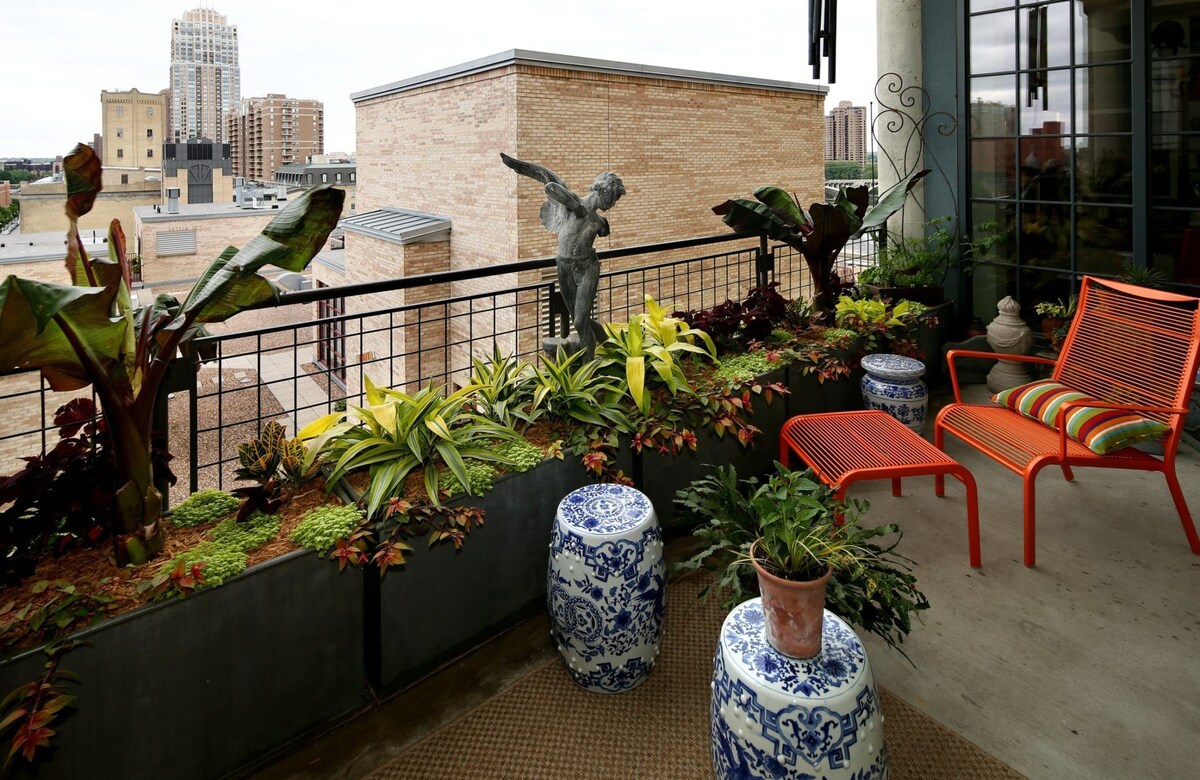
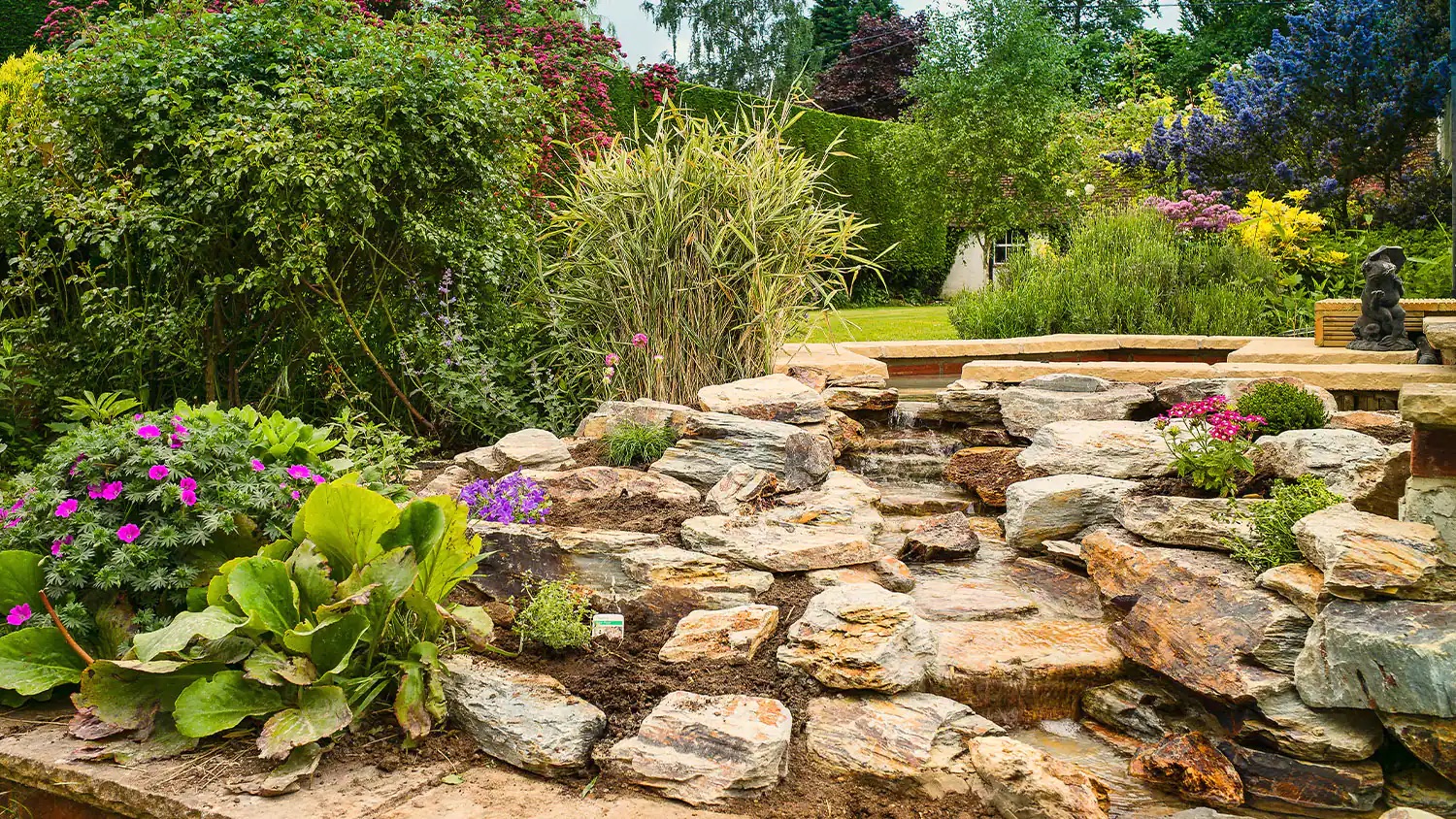
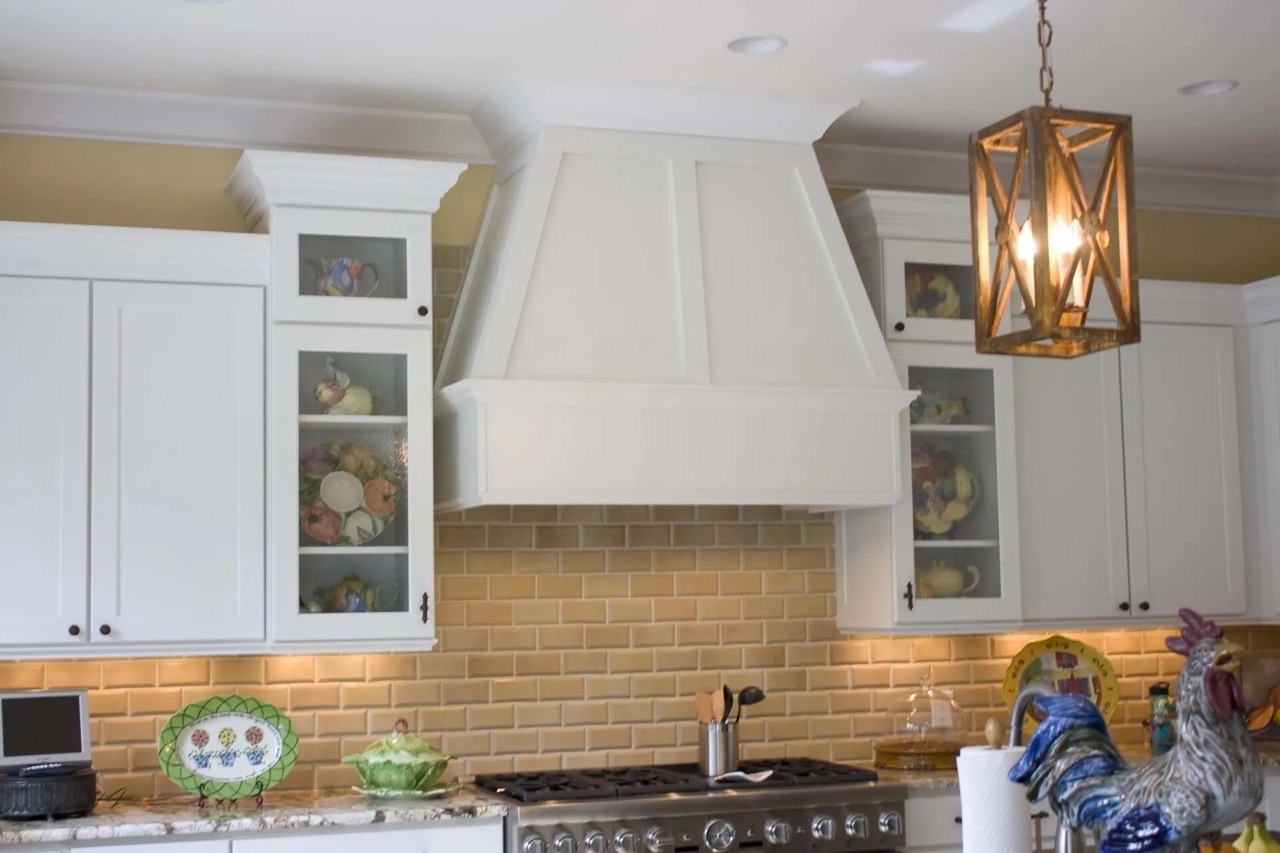

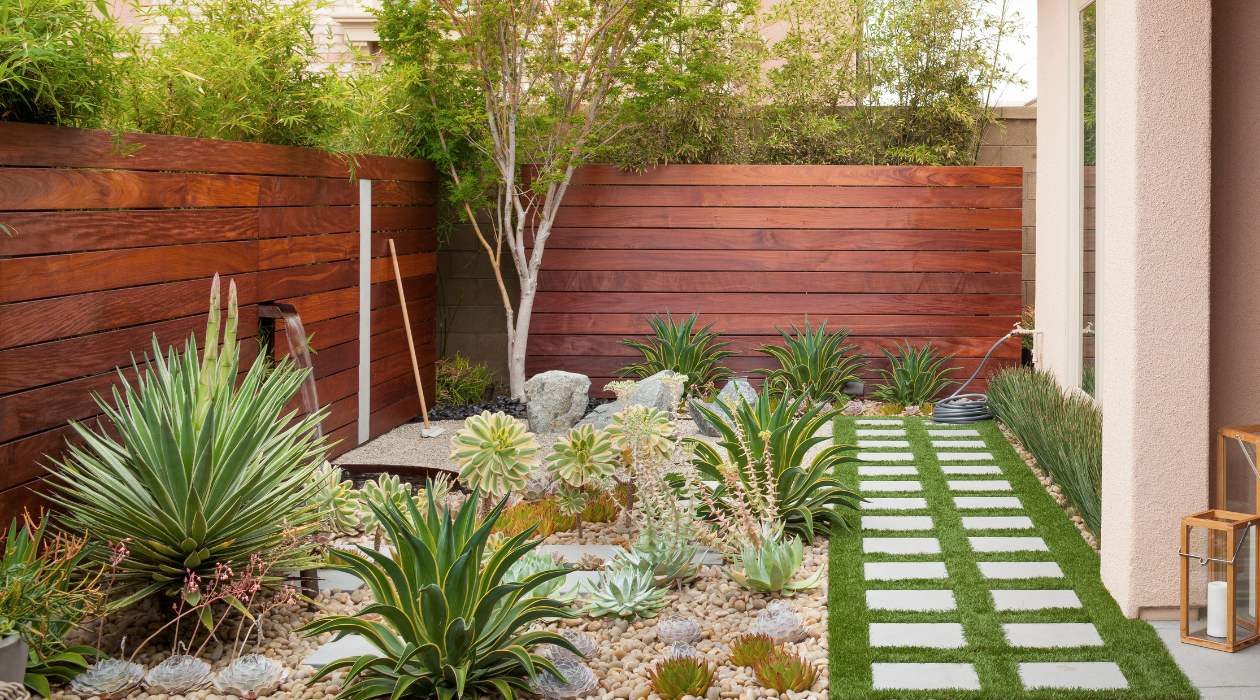


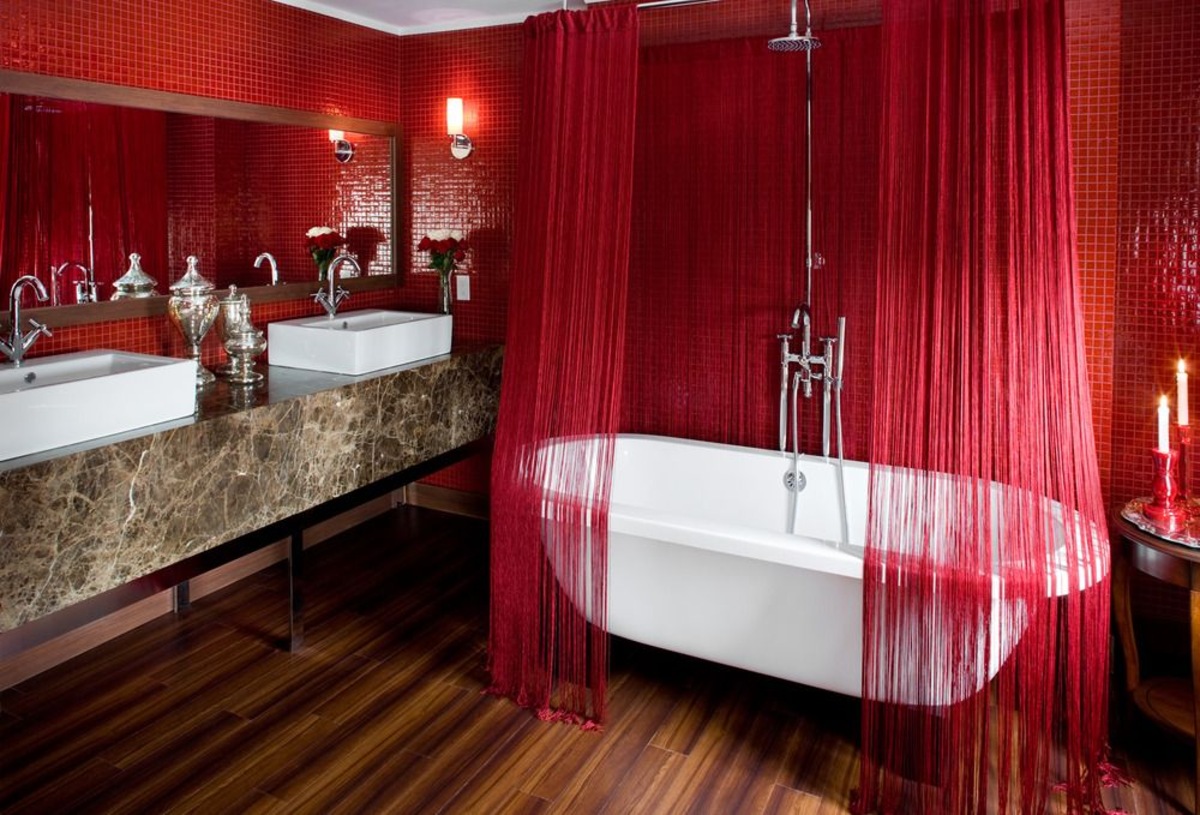
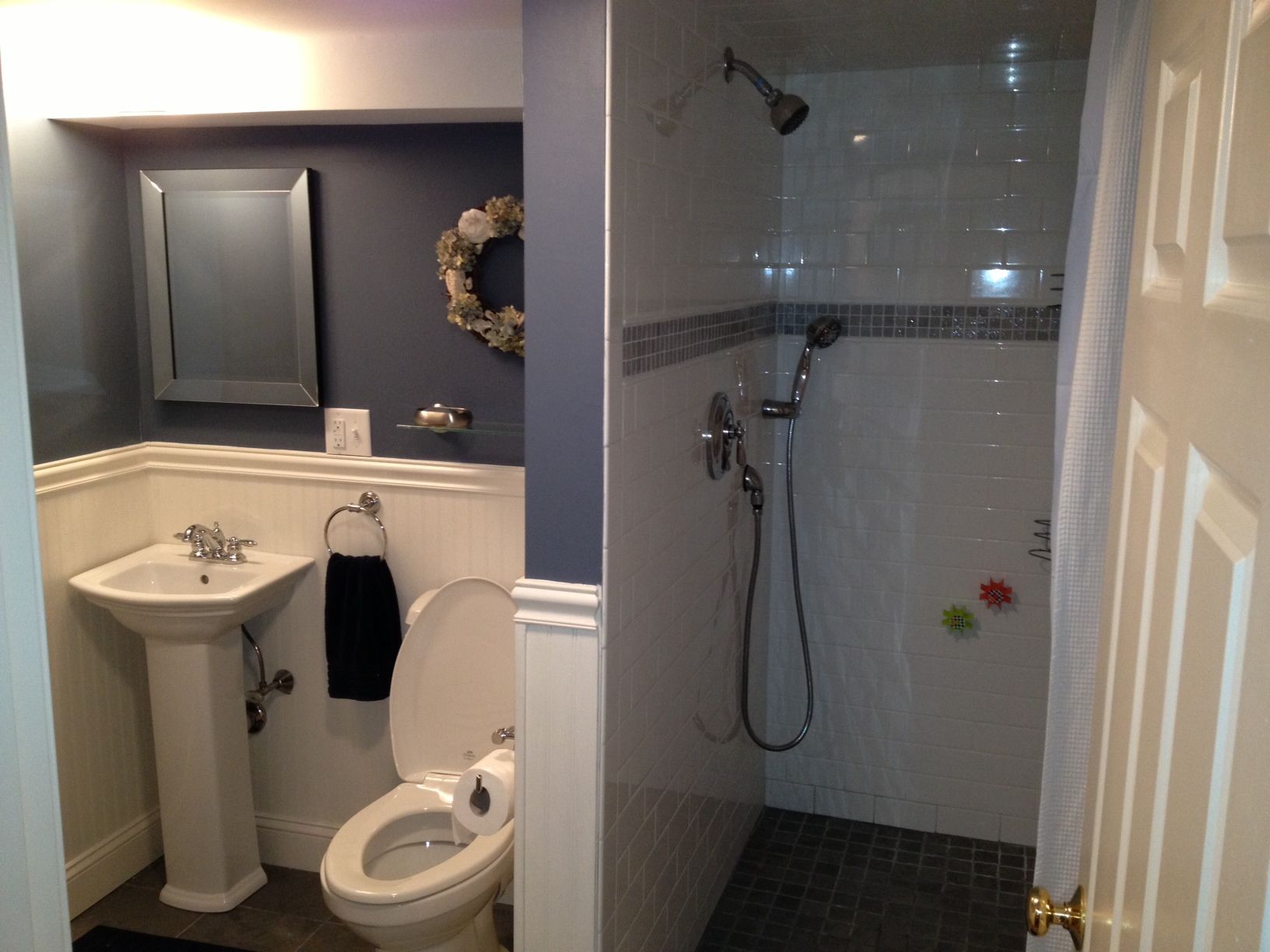
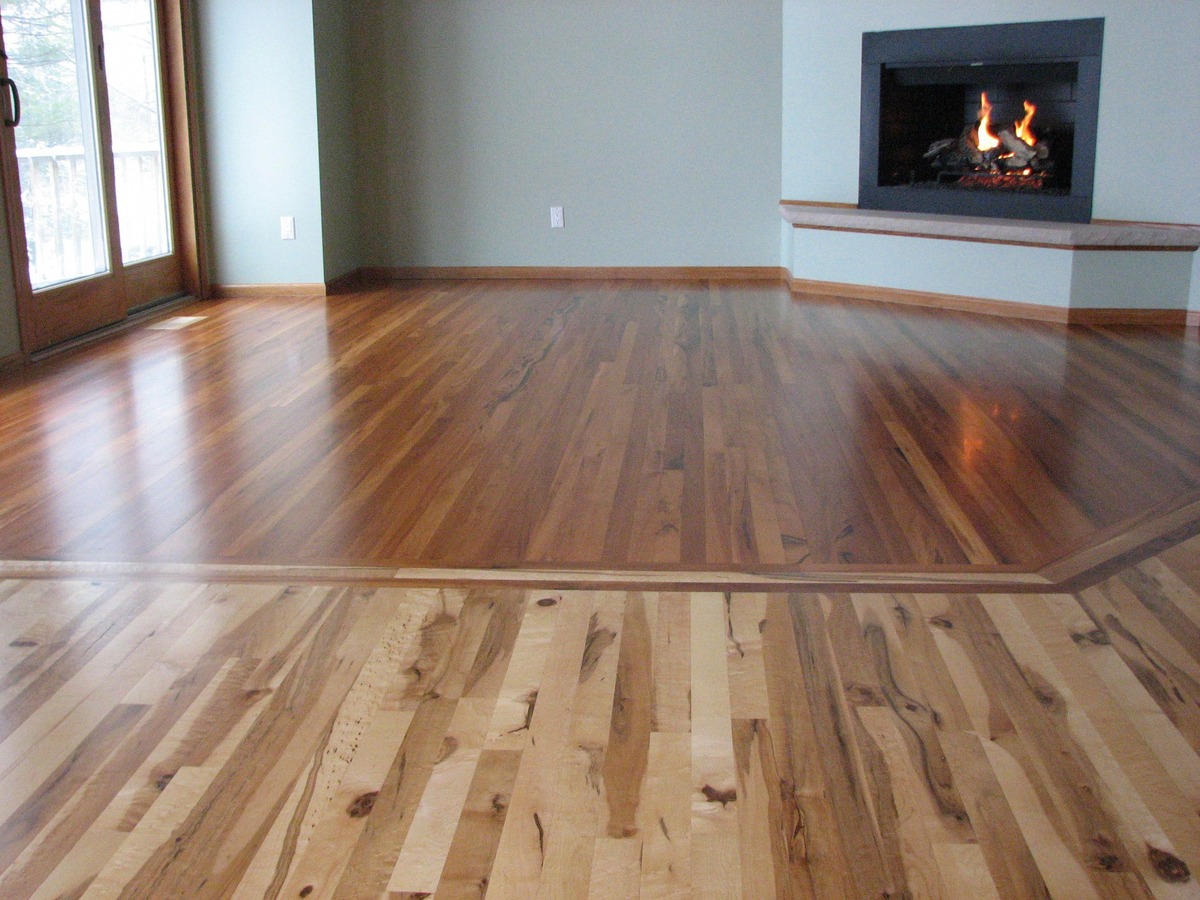

0 thoughts on “Rock Garden Ideas: 20 Ways To Create A Modern Rockery”